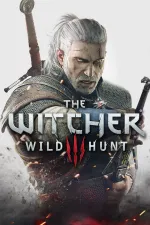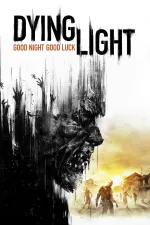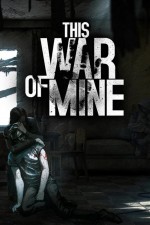Please support Game Informer. Print magazine subscriptions are less than $2 per issue
Polish Powerhouse
When its founders were peddling pirated games on the streets of Warsaw in the early ’90s, no one knew the name CD Projekt. Fast forward three decades, and the developer is the darling of the gaming industry. The Witcher 3: Wild Hunt’s vibrant open world, compelling characters, and short-story quality side quests earned it universal accolades. Game Informer readers voted it the best game of all time, and its popularity compelled Netflix to commission a series based on the franchise. Since release, the studio has built a loyal fan base thanks to a steady stream of free downloadable content, several high-quality paid expansions, and a fierce stance against nickel-and-diming microtransactions. All eyes are now on its next game, Cyberpunk 2077, to see how – not if – CD Projekt can raise the bar for open-world RPGs once again.
The world may be focused intensely on CD Projekt, but if you widen the angle slightly to take in the entirety of the Polish development scene, what you find may astound you.
Over the last 20 years, Poland has become a hotbed of game development talent, delivering memorable titles like This War of Mine, Dying Light, and Bulletstorm. To understand how this small country once trapped behind the Iron Curtain has become an epicenter for interactive entertainment, I traveled to Poland to speak with the people who put the country on the map.
Gaming Behind The Iron Curtain
Standing in the middle of Warsaw’s city center, if you blink quickly you could easily mistake the Polish capital for an American city. Unlike the picturesque vision many have in their heads of European hubs, the city isn’t just a serpentine tangle of one-lane cobblestone streets, historical landmarks, and open-air cafes. While you can certainly find neighborhood pockets that feed that stereotype, this part of the city is surprisingly modern. Wide streets with multiple lanes cut a swath through the neighborhood. Netflix advertisements for its latest original series adorn the sides of high-rises, and Uber Eats deliverymen zoom down the streets bringing lunch to the hundreds of multinational corporations that call the area home.
The modern aesthetic shouldn’t be surprising given Poland’s impressive upward trajectory. Since it joined the European Union in 2004, its Gross Domestic Product (GDP) has surged remarkably year over year, making it the second largest economy among Central and Eastern European Countries (CEEC), behind Germany. Polish game companies have played a big role in this economic growth. Nearly 300 game studios call the country home. Shares of the larger game companies like CD Projekt and 11 bit Studios are even traded on the Warsaw Stock Exchange. But eras of peace and prosperity like this have been few and far between in the country’s history.
Throughout the last several centuries, regional powers have run roughshod over the Polish territory. With few geographical buffers to protect it, Poland’s flat plains and ample farmland made it ripe for conquering, and neighboring countries took advantage. Throughout history, the territory suffered invasions at the hands of the Austrians, French, Germans, Russians, Swedish, and even the Mongols. The occupying Nazis razed Warsaw during World War II, and from the end of the war until its transformation into a democratic republic in 1990, Poland’s government operated under the oppressive thumb of the Soviet Union.
Video games rose to prominence across the globe while Poland was locked behind the Iron Curtain, but despite the closed markets of the Soviet era, games still found their way into the country. Many Poles were first introduced to games in the same way Americans were – through arcades. The first arcade opened in Warsaw in 1972, boasting an original Pong machine. During the same time, mobile wooden shacks housing several arcade units were wheeled around from town to town, giving the wider regions of Poland their first exposure to pinball machines and Western games.
Playing video games within the confines of your private home, however, was much harder. With a struggling economy, many store shelves were empty. People had to wait in line for basic amenities like food and toilet paper, so it was understandable that consoles like the Nintendo Entertainment System or Sega Genesis never made a cultural dent. If you wanted to play the latest and greatest games, your best bet was the black market, where the PC gaming scene took root.
“ZX Spectrum was the first big gaming thing,” says CD Projekt co-founder Marcin Iwiński. “It had a lot of advantages. First and foremost, it was affordable. What was really crucial here is you could load the games using a cassette player – any cassette player – so you didn't need to buy one. Then you could copy the games from friends and cassette tapes. It sounds totally insane as of today, but they were actually broadcasting computer programs over the radio. They would say like, ‘Right now you'll be able to render some functions with some beautiful graphics so tune in.’ We would record it and then play it back and load it onto our Spectrums.”
A loose-knit gaming community organically formed around the weekly outdoor markets in cities like Warsaw and Wroclaw, where likeminded Poles got together to buy and sell computers, talk about new games, and swap pirated PC software.
“In Poland, we were like China – we didn’t have copy protection before 1994,” says Techland founder Paweł Marchewka. “You could buy a legal version of Microsoft Windows in a shop and it had nothing to do with Microsoft. Microsoft wasn't selling it.”
These gaming havens became the breeding ground for the future leaders of the Polish game-development scene. Founders of studios like CD Projekt, Techland, and People Can Fly cut their teeth sourcing and distributing new software from America and Europe, so they were poised to act when the economy transitioned to an open market and copyright laws fell into place.
“I was on the bulletin-board system scene, so I had a lot of contacts in the West,” Iwiński recalls. “I was probably one of the first in Poland who bought a CD-ROM reader. They were crazy expensive at that time, and I bought a few games – The 7th Guest, Mad Dog McCree, Indiana Jones and the Fate of Atlantis, or Day of the Tentacle to name the top hits back then. Then Michał Kiciński – a friend from high school and a future [CD Projekt] co-founder – he came over to my place and said, ‘Wow, maybe we could sell some.’ I started importing from a small U.S. wholesaler over the week, and then he was selling over the weekend.”
Suddenly, games were everywhere and the market was booming, but there was one catch – none of the games were localized for the Polish market. The majority of Polish gamers played the games in English. CD Projekt raised the issue with publishers, but no one thought they’d make back enough money to justify the cost. That’s when CD Projekt decided to take it upon themselves to do it. Their first localized games, Ace Ventura and Pink Panther, did well enough in Iwiński’s eyes to attempt a much bolder localization for BioWare’s ambitious RPG Baldur’s Gate. The game’s publisher, Interplay, did not want to take any risk nor workload related to the Polish version, but acquiesced when CD Projekt agreed to contractually take all the responsibility and eat the costs if it failed miserably.
CD Projekt hired 10 translators and more than 20 Polish voice actors for the thousands of pages of dialogue, and even recorded ambient chatter for the market so the background shouting was in Polish. They also made an expensive-looking hardcover manual that looked like a D&D player’s handbook, complete with a map printed on parchment paper.
“On the day of release, we shipped 18,000 units and nobody could believe that,” Iwiński says. “We had a queue of wholesalers, and we actually had to take an external warehouse because in our small office could fit maybe just 5,000. They were fighting in front of the warehouse for who will get the stock first. In the first two years, we sold over 50,000. Nobody – including Interplay – could believe it.”
The massive success of Baldur’s Gate not only proved localized games were viable in Poland, but that the locals were willing to cough up money for it despite years of paying next to nothing for pirated games.
DIY Game Development
Emboldened by the business experience gained in distribution, many of the early Polish companies turned their focus toward an ambitious new goal – making their own games.
“I remember standing in a queue for Theme Park in ’94 or ’95 and I thought, ‘My god, we are in a queue as wholesalers buying Theme Park for what would now be the equivalent of 40 euro, while we were making a fraction of Western salaries,’” Marchewka says. “I thought it’s not okay, we should be doing the opposite. Here in Poland we should be making games and selling them to the Western countries.” Marchewka started putting flyers out on the exchange market recruiting programmers, artists, and designers to Techland.
After years tinkering with computers in their basements and bedrooms, much of the first generation of Polish game developers were completely self-taught, learning on the fly. That was the case for Adrian Chmielarz and Grzegorz Miechowski, who funded their first game by selling computers. As Metropolis Software, they released their first commercial product, Tajemnica Statuetki (The Mystery of the Statuette), in 1993. The point-and-click adventure used photographs from Chmielarz’s vacation on Saint-Tropez to tell the story of a detective trying to recover stolen artifacts. The game was a hit in Poland, but distributors didn’t purchase many copies so they were left to handle the majority of shipments themselves.
“I spent a year going every single week to the post office and mailing every single copy myself, writing the addresses and everything,” Chmielarz remembers. The duo went on to make Teenagent and Gorky 17 (released as Odium in North America), two other Polish cult favorites.
But as successful as these games were in the country, none of the titles put Poland development on the map internationally.
Poland's Big Break
Understandably focused on the pre-existing talent pools in North America and Europe, the majority of game publishers in the ’90s and early 2000s didn’t have Polish game developers on their radar. The more persistent studios were able to secure meetings, but these didn’t always go as they envisioned.
“It was very hard, especially at the beginning,” Marchewka says. “Back then, the publishers really didn't need to buy anything. There were people from acquisition going around looking at games, always bored…They come up with a lot of different reasons not to buy.”
“We were hearing straight nos for three years in a row,” Iwiński adds. “We couldn’t go out into the market with Witcher without the publishing partners because how would we get it into the stores? There’s no way.”
The big break for many Polish developers came in the same calendar year: 2004. The first company to make real headway globally was People Can Fly, a studio Chmielarz started after leaving Metropolis. His first project with the new studio was Painkiller, a moody, bloody first-person shooter that took cues from Doom and Quake. Impressed by the proprietary engine and fast-paced action, Canadian publisher DreamCatcher Interactive took a chance on the studio. Released in April of that year, Painkiller was well received by critics, earning an 8.5 review score from Game Informer and spawning several expansion packs and follow-ups.
That same year, at E3 Techland showed off a Western-themed first-person shooter named Lawman (which was later rebranded Call of Juarez). The game caught the eye of Ubisoft, who eventually agreed to publish it in North America. The Western did well enough for Ubisoft to franchise the brand, establishing Techland’s reputation as a capable studio.
CD Projekt debuted its first game at the same E3. Unable to gain traction with any publishers, the studio was given a big visibility boost by fellow RPG developers BioWare. Having established a relationship with the Canadian studio during the Baldur’s Gate localization, CD Projekt licensed the Aurora engine for The Witcher. A few months before E3, Iwiński got an unexpected invitation from studio founders Ray Muzyka and Greg Zeschuk to show their prototype at the BioWare booth. The game caught notice from the press and publishers, and a few years later they signed a publishing deal with Atari.
A Talent Explosion
In the wake of the success experienced by early trailblazers like People Can Fly, Techland, and CD Projekt, new Polish developers spawned at a rapid rate. Many talented designers left these studios to form their own companies, and over the next decade, it was no longer uncommon to see a Polish game earn international praise. Dead Island. Anomaly: Warzone Earth. Bulletstorm. Dying Light. Layers of Fear. The Vanishing of Ethan Carter. This War of Mine. Superhot. Observer. The parade of quality interactive experiences is remarkable. Which raises the question – what is it about Poland that made it such a prolific breeding ground for development talent? Many of the developers we spoke to pointed to an innate creativity and ambition born out of idolizing American culture while suffering under the oppressive communist regime.
“The creativity aspect was there because we didn’t have 10 different toys to play with as a kid,” Marchweka says. “You had to take a branch from a tree and then imagine you had a bazooka, for example. We were used to being creative, so I think this aspect stays in mind. Plus, I think Western countries have been reasonably wealthy for a long time in comparison, so we are much more hungry for success. When we were young, we would watch movies from Western countries thinking, ‘Oh my god, look at the cars they have.’ Almost anything they had, we didn’t have…People had American dreams here, too. We didn’t have Polish dreams.”
Ambition certainly helps, as does having a gift for technology. Poland’s always had a knack for math and science – after all, famous Renaissance mathematician and astronomer Nicolaus Copernicus hailed from the region – but over the past several decades the country has solidified a reputation for being tech-savvy. The rich education base helps. Poland currently places fourth in Europe – behind only France, Germany, and the United Kingdom – in the number of students enrolled in higher education. Many of these students are studying engineering and computer science, making the country a hotbed for tech start-ups. This naturally aligns with many of the same skills needed to develop video games.
When Poland joined the European Union in 2004, it declined to adopt the euro currency, instead preserving the Polish Zloty. This crucial decision unknowingly had a buttressing effect on the game development scene. When international hits like The Witcher and Dying Light sell for full price in the United States and Europe, that money goes much further in Poland than it would if the studios were based in San Francisco, Paris, or another Western city.
“We’re growing stronger because we are earning Western money but living in Poland,” Chmielarz says. “The studios are sort of twice as strong when they hit jackpot with a game, right? This allows them to invest even more. Even in order to sort of survive they don’t need as much even so as Western companies.”
The games designed in Poland cover a wide swath of genres, so there is no quintessentially “Polish” quality you can identify across the board, but in recent years more of the nation’s national identity has started to emerge through specific games.
“I think around The Witcher and when [11 bit Studios] were making This War of Mine that we understood we have something to say – we have our own identity,” says 11 bit Studios art director Przemysław Marszał. “For the Witcher you could see that they were showing some Eastern European [folklore]. On the other side with This War of Mine, we also translated a lot of our history and experience with the times like the war into the game. We look at things differently as every nation does, and I think we thought about it and said, ‘Let’s say something that has some part of Polish culture and history in games.’”
These success stories have led to an immense amount of national pride in the game development scene. The Polish government established grant programs to advance and grow the games industry in the region, and Polish prime minister Donald Tusk presented a collector’s edition of The Witcher 2: Assassins of Kings as a gift to U.S. President Barack Obama during a diplomatic visit in 2011. When he revisited Poland in 2015, Obama mentioned the game in his opening remarks.
“The last time I was here, Donald [Tusk] gave me a gift, the video game developed here in Poland that’s won fans the world over, The Witcher,” he said. “I confess, I’m not very good at video games, but I’ve been told that it is a great example of Poland’s place in the new global economy. And it's a tribute to the talents and work ethic of the Polish people as well as the wise stewardship of Polish leaders like prime minister Tusk.”
“We were like, ‘Holy f---, that’s pretty decent PR,’” Iwiński says.
Pole Position
It’s not hard to see a future where the Polish development community continues to grow in prominence. 11 bit Studios recently expanded to add game publishing divisions. CD Projekt owns and operates the digital distribution platform GOG.com, a DRM-free Steam competitor that celebrated its 10th anniversary last year. Polish independent studios are delivering a steady stream of interesting games to the world, and established studios continue to expand operations and bring on new development talent from across the globe. For once, it’s Poland that’s doing the conquering.
“I don’t think there’s anything easier than finding a game dev job in Poland,” Chmielarz says.
In just the next few years, you can look forward to titles like Dying Light 2, Witchfire, and Cyberpunk 2077. When people ask what Poland is famous for, suddenly the answer isn’t just sausage and vodka.
“That was Poland for me 10 to 15 years ago,” Iwiński says. “Right now, Poland is famous for games. And that’s an amazing feeling.”
This article originally appeared in the December 2018 issue of Game Informer.



























